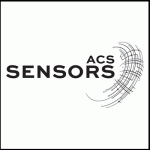 Haiying Liu (Chem), Ashutosh Tiwari (Chem), Ranjit Pati (Physics), along with graduate students Rashmi Adhikari, Mingxi Fang, Nethaniah Dorh, Cong Li, Jingtuo Zhang and Meghath Jaishi, published a paper titled “Near-Infrared Fluorescent Probes with Large Stokes Shifts for Sensing Zn(II) Ions in Living Cells” in ACS Sensors.
Haiying Liu (Chem), Ashutosh Tiwari (Chem), Ranjit Pati (Physics), along with graduate students Rashmi Adhikari, Mingxi Fang, Nethaniah Dorh, Cong Li, Jingtuo Zhang and Meghath Jaishi, published a paper titled “Near-Infrared Fluorescent Probes with Large Stokes Shifts for Sensing Zn(II) Ions in Living Cells” in ACS Sensors.
 Kelci Mohrman research, The Geminga Pulsar Wind Nebula and the Positron Excess, was presented at Michigan Tech’s 2017 Undergraduate Research Symposium this past week. Mohrman looked to identify and model the gamma-ray emission of the Geminga PWN in GeV energies using data from the Fermi Space Telescope in order to determine the potential contribution to the local electron and positron flux.
Kelci Mohrman research, The Geminga Pulsar Wind Nebula and the Positron Excess, was presented at Michigan Tech’s 2017 Undergraduate Research Symposium this past week. Mohrman looked to identify and model the gamma-ray emission of the Geminga PWN in GeV energies using data from the Fermi Space Telescope in order to determine the potential contribution to the local electron and positron flux.
Geminga (PSR J0633+1746) is a rotating neutron star, called a pulsar, located in the direction of the constellation Gemini. Surrounding the pulsar itself is a pulsar wind nebula (PWN), which accelerates particles to high energies and emits constant gamma radiation. It has been suggested that the particles accelerated by the Geminga PWN could explain the observed excess in the locally measured positron flux, though it was also proposed that this anomalous overabundance of positrons could be a consequence of the annihilation or decay of dark matter.
The Undergraduate Research Symposium highlights the amazing cutting-edge research being conducted on Michigan Tech’s campus by some of our best and brightest undergraduate students.
The students showcasing their work today have spent a significant portion of the past year working alongside Michigan Tech faculty and graduate students to explore, discover and create new knowledge. They’ve spent long hours in the lab or out in the field designing experiments, gathering data, creating new models and testing hypotheses. They’ve applied their classroom knowledge in new and sometimes unexpected ways, and developed new skills that will propel them forward in their careers.
Advisor: Dr. Petra Huentemeyer
Funding: SURF
 Kaelan Anderson’s research, Studying the Properties of Free Tropospheric Aerosols in the Mid Atlantic, was presented at Michigan Tech’s 2017 Undergraduate Research Symposium this past week. With the assistance of Claudio Mazzoleni, Anderson looked at if the long term research of atmospheric aerosols is necessary to accurately understand and predict a variety of atmospheric phenomena. A relevant example is black carbon, and its forcing effects on the climate.
Kaelan Anderson’s research, Studying the Properties of Free Tropospheric Aerosols in the Mid Atlantic, was presented at Michigan Tech’s 2017 Undergraduate Research Symposium this past week. With the assistance of Claudio Mazzoleni, Anderson looked at if the long term research of atmospheric aerosols is necessary to accurately understand and predict a variety of atmospheric phenomena. A relevant example is black carbon, and its forcing effects on the climate.
The Undergraduate Research Symposium highlights the amazing cutting-edge research being conducted on Michigan Tech’s campus by some of our best and brightest undergraduate students.
The students showcasing their work today have spent a significant portion of the past year working alongside Michigan Tech faculty and graduate students to explore, discover and create new knowledge. They’ve spent long hours in the lab or out in the field designing experiments, gathering data, creating new models and testing hypotheses. They’ve applied their classroom knowledge in new and sometimes unexpected ways, and developed new skills that will propel them forward in their careers.
 Yoke Khin Yap’s research in high-brightness fluorophores earned him a place in Michigan Tech’s Research Magazine in the article “Commercialization“.
Yoke Khin Yap’s research in high-brightness fluorophores earned him a place in Michigan Tech’s Research Magazine in the article “Commercialization“.
“We are expecting a huge impact to the field of flow cytometery…This will mean a lot for cancer and stem cell research.”
High-brightness fluorophores are dyes that fluoresce in different colors and degrees of brightness. They are used in machines called flow cytometers to detect diseased cells in blood.
 Michigan Tech Magazine “Research” has released its 2017 issue detailing the recent discovery of Merelaniite by Dr. John Jaszczak and his team; with the article Meet the Minerals.
Michigan Tech Magazine “Research” has released its 2017 issue detailing the recent discovery of Merelaniite by Dr. John Jaszczak and his team; with the article Meet the Minerals.
Merelaniite has a unique geometry made up of tiny whiskers of graphite-like spires extracted from the crooks of an albandanite crystal.